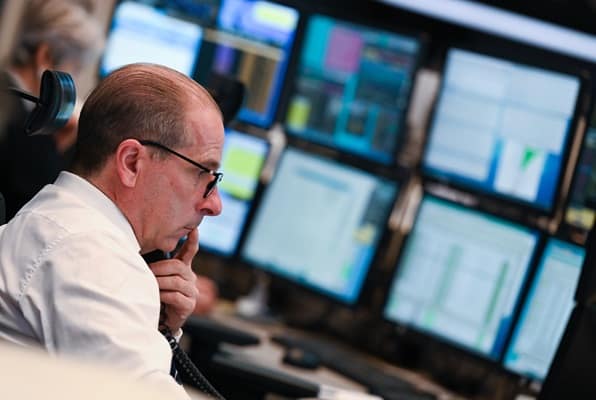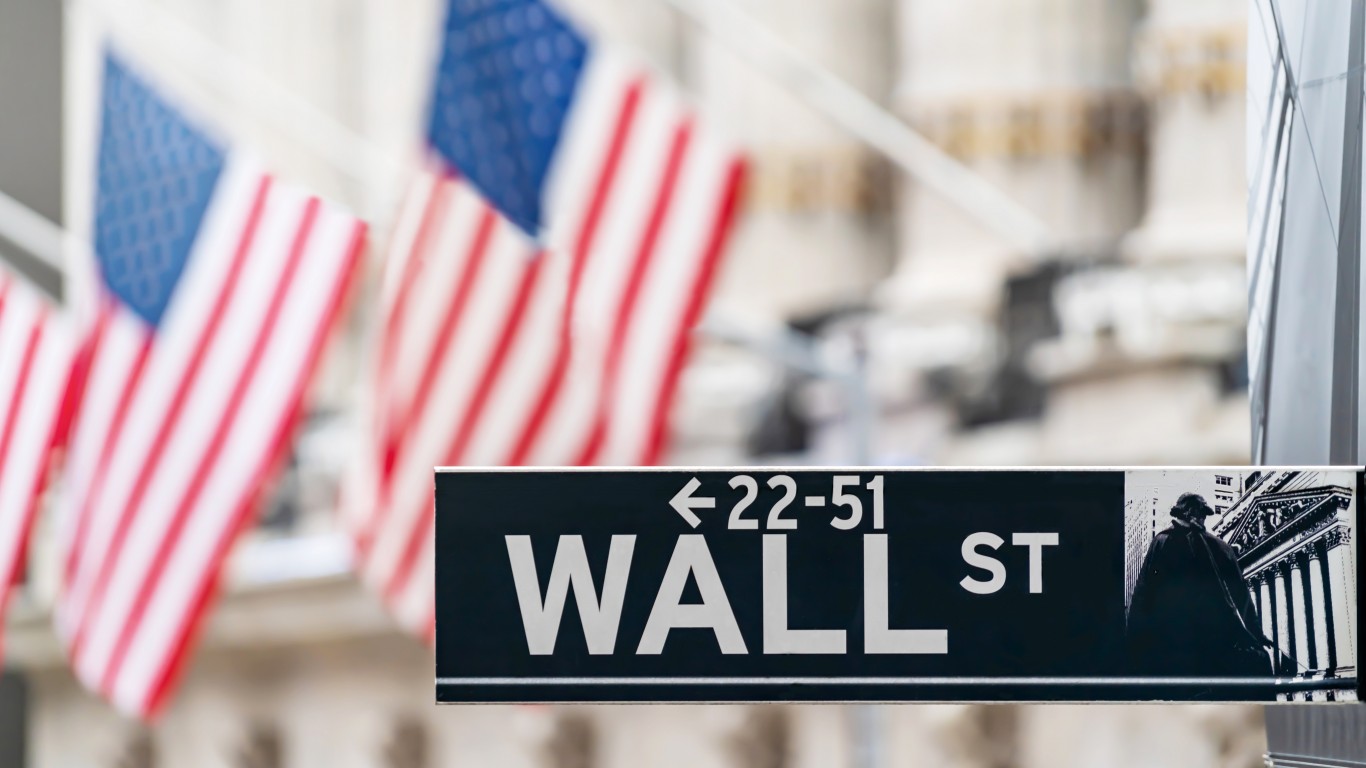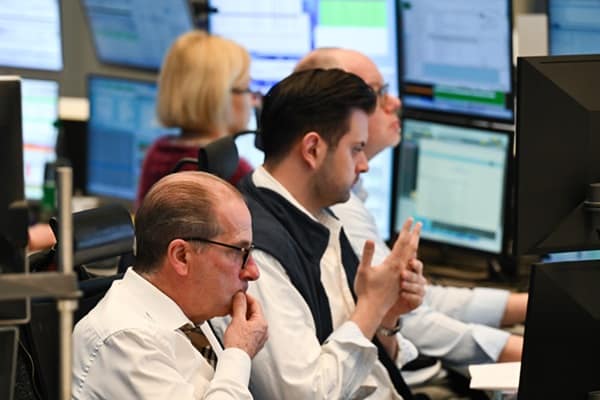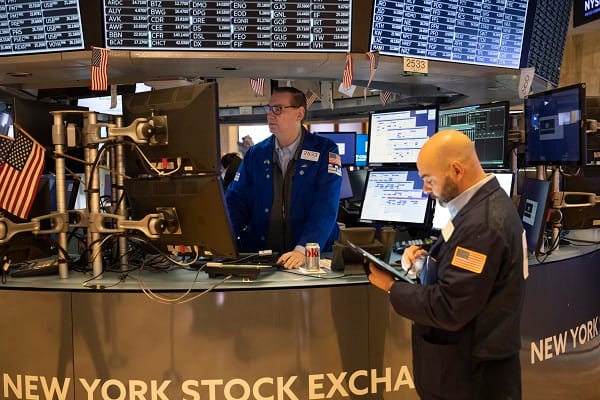#us-equities
#us-equities
[ follow ]
#federal-reserve #treasury-yields #european-markets #government-shutdown #economic-indicators #labor-market
Business
from24/7 Wall St.
3 weeks agoHere Are Tuesday's Top Wall Street Analyst Research Calls: Applied Materials, CDW, Exact Sciences, Harley-Davidson, Oshkosh, ServiceNow and More
Major US stocks rallied Monday amid an oversold bounce and AI/data-center optimism; Treasury yields fell and energy prices rose on hopes of Fed rate cuts.
US news
fromLondon Business News | Londonlovesbusiness.com
4 weeks agoThe significant events in the global economy over the past week - London Business News | Londonlovesbusiness.com
U.S. stocks closed mixed after the government reopened; hawkish Fed signals cut December rate-cut odds, weighing on tech and small caps while European markets advanced.
World news
fromFortune
1 month agoTop analyst sees U.S. stocks underperforming the rest of the world over the next decade as 'superstar' AI stocks make forecast uncertain | Fortune
U.S. stocks are forecast to underperform over the next decade due to high starting valuations and market concentration, while other regions should deliver stronger returns.
Business
fromLondon Business News | Londonlovesbusiness.com
1 month agoThe significant events in the global economy over the past week - London Business News | Londonlovesbusiness.com
US stocks fell as tech and growth shares slid, confidence weakened by the prolonged federal shutdown, mixed employment data, and fading risk appetite.
US news
fromwww.theguardian.com
1 month agoUS stock market values tumble amid reports of high layoffs and hiring freezes
Rising layoffs, hiring freezes, and missing economic data amid a government shutdown triggered market declines and heightened caution about AI-driven valuations and interest-rate decisions.
from24/7 Wall St.
1 month agoHere Are Tuesday's Top Wall Street Analyst Research Calls: Apple, AbbVie, Broadcom, CyberArk, Palantir Technologies and More
The S&P 500 and NASDAQ futures are trading down over 1% on Tuesday, following Palantir's 6.9% decline despite beating earnings expectations and giving strong forward guidance. Concerns over an AI bubble continue to mount. Tuesday's sell-off follows a wild start to the week, during which the Dow Jones Industrial Average traded lower due to weakness in Merck Inc. (NYSE: MRK) and UnitedHealth Group Inc. ( NYSE: UNH).
Business
fromLondon Business News | Londonlovesbusiness.com
2 months agoA look at the significant events in the global economy over the past week - London Business News | Londonlovesbusiness.com
U.S. equity markets ended the week lower as a mix of trade tensions and political uncertainty unsettled investors. The Nasdaq Composite and S&P 500 initially held firm, supported by continued enthusiasm for artificial intelligence-related companies. A major boost came from Advanced Micro Devices' announcement of a strategic partnership with OpenAI, which lifted AMD's shares by more than 20% early in the week.
US news
fromLondon Business News | Londonlovesbusiness.com
2 months agoGlobal market insights - London Business News | Londonlovesbusiness.com
With government data releases halted by the shutdown, markets turned to private indicators for clues about the economy's health. Payroll provider ADP reported a surprising 32,000 job losses in September-far below expectations for job gains-fuelling expectations for Fed rate cuts. However, several Fed officials maintained a cautious tone. Chicago Fed President Austan Goolsbee warned of persistent services inflation, while Dallas Fed's Lorie Logan suggested a slower path to policy normalization.
Business
from24/7 Wall St.
2 months agoOctober Marks Start of Q4 Rally. These 2 Stocks Are Ready to Run Higher
Much of this edge stems from seasonal factors, including the Christmas holiday shopping surge that boosts retail and consumer sectors from November through December. Strong earnings reports in Q4 also often fuel optimism, as companies close out the year with solid results. The quarter also aligns with the close of the old investing adage to "sell in May and go away," where investors who sidelined themselves during the slower summer months return to the markets adding capital, driving demand.
Business
fromFortune
2 months agoU.S. stocks are chipping away at Europe's outperformance, and Powell slipped in this dovish signal on Fed rates that Wall Street overlooked | Fortune
U.S. stocks have made furious rebounds, setting fresh record highs and eroding the outperformance that European markets have enjoyed for much of this year. The S&P 500 is now up 13% year to date and the Nasdaq is up 17%. As recently as late June, when the broad market index had retaken its prior all-time high, both were up 5%.
Miscellaneous
Business
fromLondon Business News | Londonlovesbusiness.com
3 months agoThe significant events in the global economy over the past week - London Business News | Londonlovesbusiness.com
U.S. markets finished mixed as weak August jobs data lifted expectations for Fed rate cuts, lowering Treasury yields and supporting tech and smaller-cap stocks.
Business
fromLondon Business News | Londonlovesbusiness.com
3 months agoThe significant events in the global economy over the past week - London Business News | Londonlovesbusiness.com
U.S. markets finished mixed as NVIDIA earnings eased tech valuation concerns while political pressure on the Fed and mixed economic data affected investor sentiment.
fromwww.mercurynews.com
3 months agoStocks hit by tech selloff after economic reports: Markets Wrap
Wall Street traders drove stocks lower amid a selloff in tech shares that have powered the surge from April's meltdown. That's despite economic data that did little to alter bets on Federal Reserve rate cuts, with bonds and the dollar seeing small moves. Equities fell after a rally that drove the S&P 500 to all-time highs. The market is bracing for what has historically been the weakest month for US shares.
US news
fromLondon Business News | Londonlovesbusiness.com
6 months agoThe significant events in the global economy over the past week - London Business News | Londonlovesbusiness.com
U.S. equities faced a notable decline, with the Dow falling 1.32% amid rising geopolitical tensions in the Middle East, reversing earlier market optimism.
US news
[ Load more ]










